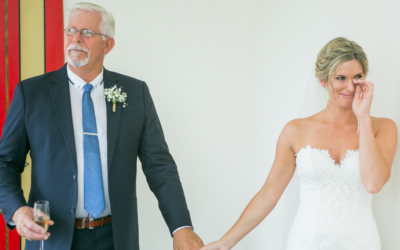
One of the most stressful aspects of planning a wedding is deciding whom to invite. You don’t want to hurt anyone’s feelings by leaving them out, but you also have to consider your budget and venue capacity. How can you create a wedding guest list that makes everyone happy?
In this blog post, we’ll share five essential tips to help you avoid stress when making your wedding guest list. You’ll learn whom to invite, how to prioritize your guests and how to keep your guest list within your budget. By following these tips, you’ll be able to create a wedding guest list that suits your vision and your wallet.
The first thing you need to do before making your wedding guest list is to set a realistic budget. Your budget will determine how many guests you can afford to invite, as well as the type of venue, catering, and entertainment you can choose.
To calculate your budget, you need to know how much money you have saved, how much money you expect to receive from your parents or other contributors, and how much money you are willing to spend on your wedding. Once you have a total amount, you can allocate it to different categories, such as venue, food, drinks, flowers, photography, etc.
One of the most important categories is food, as it usually depends on the number of guests. To find out how many guests you can afford to feed, divide your food budget by the per-person rate offered by your caterer. For example, if your food budget is $10,000 and your caterer charges $100 per person, you can invite up to 100 guests.
According to a study by The Knot, the average wedding guest list size in 2019 was 131 people. However, this number can vary depending on your personal preferences, budget and venue capacity. There is no right or wrong number of guests for your wedding, as long as you are happy and comfortable with your decision.
If the number of guests you can afford is lower than the number of guests you want to invite, you have three options: reduce your guest list, increase your budget or find a cheaper caterer. However, if you want to have a stress-free wedding planning experience, we recommend sticking to your budget and adjusting your guest list accordingly.
Tip 2: Include yourself (bride and groom) when counting
A common mistake that many couples make when creating their wedding guest list is forgetting to count themselves. This can lead to miscalculations and misunderstandings with your vendors and venue.
Remember that you and your partner are also guests at your own wedding. You need to include yourselves in the headcount when booking your venue and catering. You also need to reserve seats for yourselves at the ceremony and reception.
To avoid forgetting yourselves when counting your guests, start with the number two and then add the rest of the people on your list. This way, you’ll always have an accurate number of attendees for your wedding.
Tip 3: Start counting from your A-list
Your A-list is the group of people who are essential for your wedding. These are the people who play a significant role in the ceremony or reception, such as your parents, siblings, maid of honor, best man, bridesmaids, groomsmen, officiant, etc. These are also the people who are closest to you and your partner and who have supported you throughout your relationship.
Your A-list should be the first group of people you invite to your wedding. They should also be the first group of people you ask to confirm their attendance. You can send them save-the-date cards or invitations as soon as possible and ask them to RSVP by a certain date.
Your A-list should be the smallest group of people on your wedding guest list. Ideally, it should not exceed 20% of your total number of guests. For example, if you can invite 100 guests, your A-list should not be more than 20 people.
Tip 4: Create your B-list
Your B-list is the group of people who are important for your wedding but not essential. These are the people who are close friends or relatives who don’t play any role in the ceremony or reception. These are also the people who have been part of your life or your partner’s life for a long time and who would love to celebrate with you.
Your B-list should be the second group of people you invite to your wedding. However, you should wait until you receive some RSVPs from your A-list before sending them invitations. This way, you can avoid overbooking or underbooking your venue and catering.
Your B-list should be larger than your A-list but smaller than your C-list (see tip 5). Ideally, it should be around 40% of your total number of guests. For example, if you can invite 100 guests, your B-list should be around 40 people.
Tip 5: Identify and create your C-list
Your C-list is the group of people who are nice to have at your wedding but not necessary. These are the people who are acquaintances, co-workers, distant relatives or plus-ones whom you don’t know very well or don’t see very often. These are also the people who may have invited you to their weddings in the past or who may expect an invitation from you out of courtesy.
Your C-list should be the last group of people you invite to your wedding. You should only send them invitations if you have enough space and budget left after receiving all the RSVPs from your A-list and B-list. You should also send them invitations as late as possible, preferably a few weeks before the wedding date.
Your C-list should be the largest group of people on your wedding guest list. However, it should not exceed 40% of your total number of guests. For example, if you can invite 100 guests, your C-list should not be more than 40 people.
Bonus Tip: Don’t forget your suppliers
Finally, don’t forget to include your wedding suppliers in your wedding guest list. These are the people who will be working at your wedding, such as photographers, videographers, DJs, musicians, florists, makeup artists, hair stylists, etc.
Your wedding suppliers will also need to eat and drink at your wedding, so you need to account for them in your catering budget and seating plan. You may also need to provide them with a separate area where they can rest and store their equipment.
To avoid forgetting your wedding suppliers when making your wedding guest list, add them to a separate category or list. You can also ask them how many people they will bring and what their dietary preferences are. This way, you can ensure that they are well taken care of and that they can do their job properly.
Conclusion
Making your wedding guest list can be a stressful task, but it doesn’t have to be. By following these five essential tips, you can create a wedding guest list that fits your budget and your vision. You can also avoid conflicts and disappointments with your family and friends. Invited guests may choose to attend your wedding or not, but it is your choice whom to invite—and that is the hard part! The above guidelines should help you decide how to narrow down your list and where to draw the line. The next question is how do you deal with guests who won’t RSVP?
Related Articles
Related
Best Wedding Gifts for the Bride’s and Groom’s Parents
You want to give them something that shows how much you care but also matches their style and personality. It should be something they can cherish for years to come, but also enjoy in their daily life. Sounds daunting, doesn’t it?To help you find the best wedding...
How to Write a Heartfelt Wedding Speech for Your Parents
How do you write a wedding speech for your parents that expresses your feelings and makes them feel appreciated?If find yourself asking the above question, you might also have some of the following wedding speech questions: How do you avoid being too cheesy or boring?...
5 Meaningful Ways to Honor Your Parents During Your Wedding
The moment a father walks the bride down the aisle or when a mother helps the groom with his tie—these are iconic wedding moments that highlight the important role of the parents. While these traditional gestures are meaningful, there are many other unique ways to...




